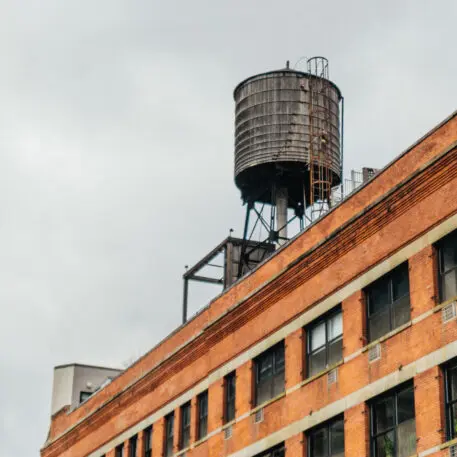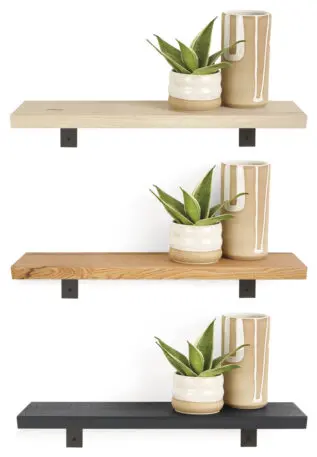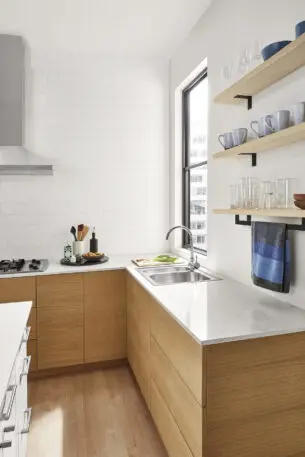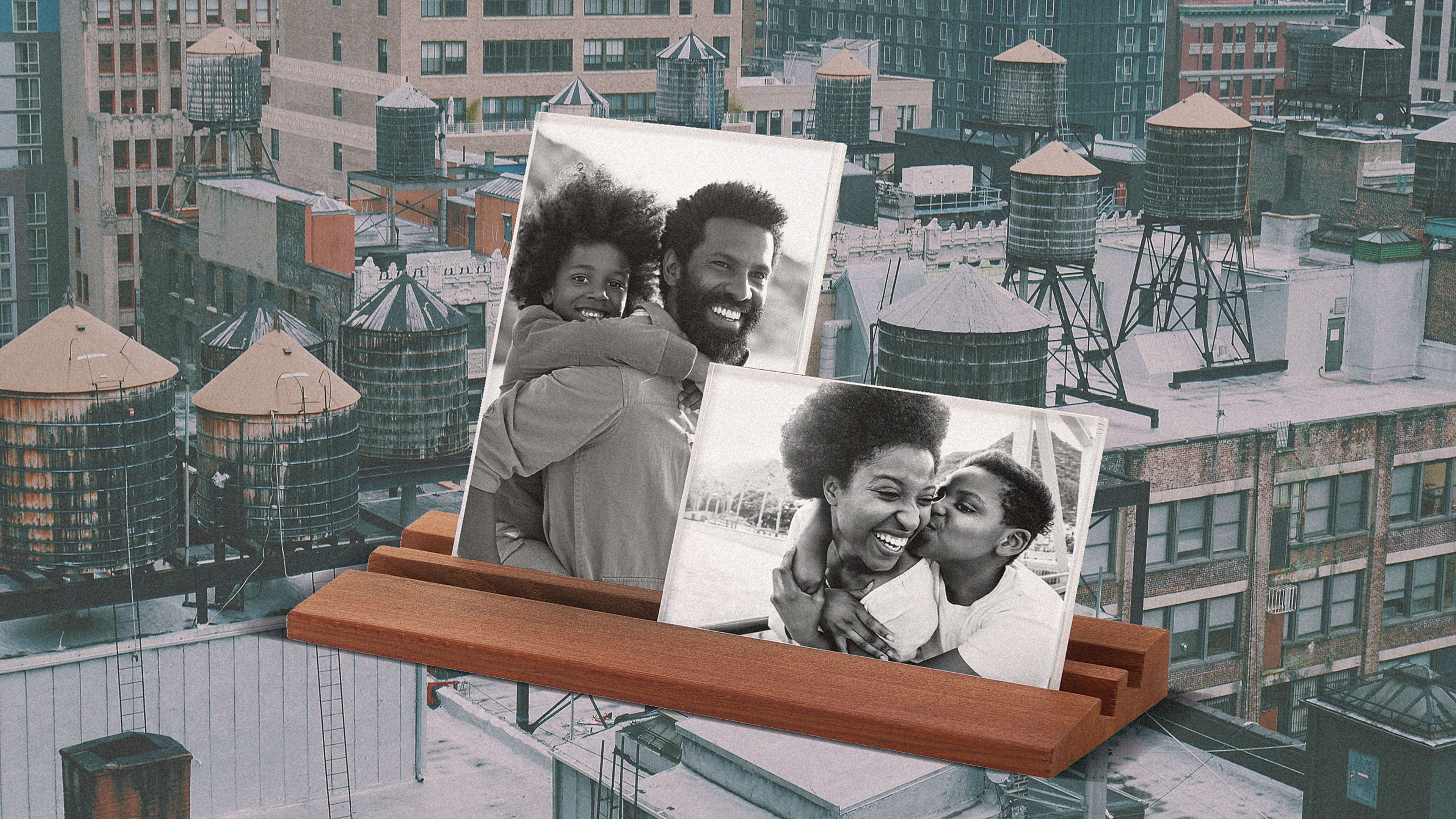As visually iconic as New York City’s skyscrapers are themselves, the ubiquitous water towers that dot the skyline are an equally large part of what you think of when you imagine the city skyline. The massive tanks, which can hold 10,000 gallons of water, soar up to 165 feet over the city. But now, as they are replaced at the end of their lifespans, they’re finding second lives: as furniture in homes across the country.

Furniture company Room & Board is now selling products made from reclaimed wood from New York City water towers. The high-end outlet has recruited help from local sustainable workshop and millworks company Tri-Lox, which has years of experience using the material from towers and other reclaimed sources. The project is part of Room & Board’s budding sustainability initiative that reuses local wood from different cities as raw materials to reduce the volume of trees it has to harvest.
The 17,000 or so water towers in New York City provide water to the city’s countless high-rise buildings. New York’s local water pressure can only push water up to six storeys, so water towers became a simple solution to pressurize the water for higher floors using gravity. But they have a finite lifetime: Even the most robust wood will eventually rot after three or so decades. At that point, they traditionally end up in landfills.

That’s a waste of lumber—and lumber that’s optimal for woodworking. The older towers are typically made from California redwood and newer ones from Alaska yellow cedar, which Alexander Bender, cofounder and managing partner at Tri-Lox, categorizes under “skyline woods.” Because they are from “old growth” forests, they’re very high-quality wood. “It’s access to a previous generation of material,” Bender says.
For a decade, Tri-Lox, a Brooklyn-based design fabrication firm, has been utilizing this reclaimed wood and that from other reclaimed industrial and forest sources, creating sustainable material streams for structural items like flooring and cladding, as well as home furnishings. “Our materials are a bit of a candy shop for furniture designers and architects,” Bender says.

The water tower project was a good proposition for the construction companies that remove them, which Tri-Lox pays for the wood. The company then keeps the towers in their storage facilities before extracting the outer perimeter material, which can come in different lengths and thicknesses, depending on the size of the tower. The company utilizes all the wood it can, and sends cutoffs and shavings to city community gardens for composting.
Tri-Lox was connected with the Minneapolis-based Room & Board as part of Room & Board’s Urban Wood Project, which sources local reclaimed wood in different cities across the country—with guidance from the U.S. Forest Service—and converts it into products for sale.
The initiative started in Baltimore, when the city decided to demolish 30,000 of the city’s iconic, turn-of-the-century row homes due to mass vacancies. Nonprofits stepped in to deconstruct the homes instead and strip them of the usable materials like the wood, bricks, and marble from the steps. Since 2018, Room & Board has used the southern yellow pine and Douglas fir for items like bookcases, media cabinets, and end tables.
“Each city has a different challenge to deal with,” says Emily McGarvey, Room & Board’s director of sustainability. The project followed in cities including Detroit, Anaheim, and the company’s native Minneapolis, mainly using reclaimed wood from fallen forests.

From the New York project, Room & Board is so far selling a tabletop picture frame and a wall shelf. Because the skyline woods are also moisture resistant (to keep the towers resilient against rot), the next products on sale in April will be bathroom organization furniture, including a wooden bath mat. Tri-Lox also mixes in timber from urban trees donated by the New York City Parks Department and Greenwood Cemetery.
The projects are small in scale for now, diverting about 200 trees a year. “The volume isn’t insignificant, but it is a small percentage of what we’re doing,” says Gene Wilson, Room & Board’s VP of merchandising and vendor management. The goal is to scale up to 1,000 by 2025, which they say would store 530 metric tons of carbon.
The ultimate goal will be to integrate the sustainable wood into the outlet’s existing high-volume product lines; it has already begun infusing some of the reclaimed ash-tree timber from the Minneapolis project into some of its core items. Even though most of its harvesting is from well-managed domestic forests, they say, this sustainable scaling could cut back on the company’s reliance on tropical forests overseas.
“This beautiful wood is being reused and reclaimed, and being turned into heirloom furniture,” McGarvey says. “It’s awesome if we can use wood that’s already coming down versus cutting down virgin trees.”
Recognize your brand’s excellence by applying to this year’s Brands That Matter Awards before the early-rate deadline, May 3.
